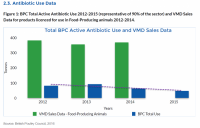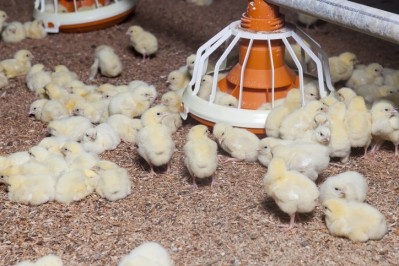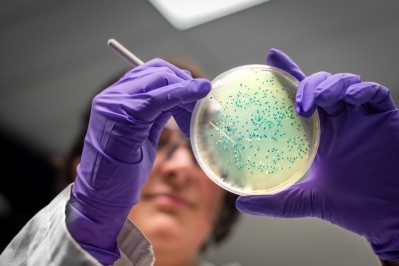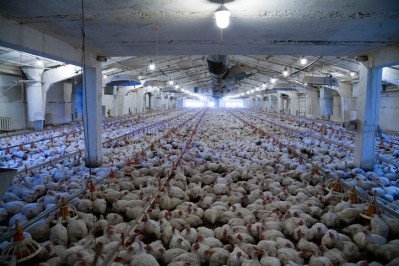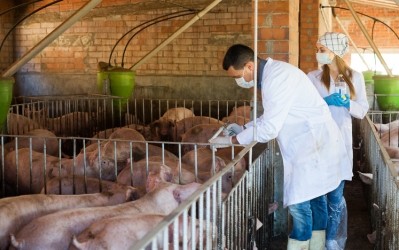UK poultry antibiotic data disclosure puts the squeeze on wider industry: Alltech
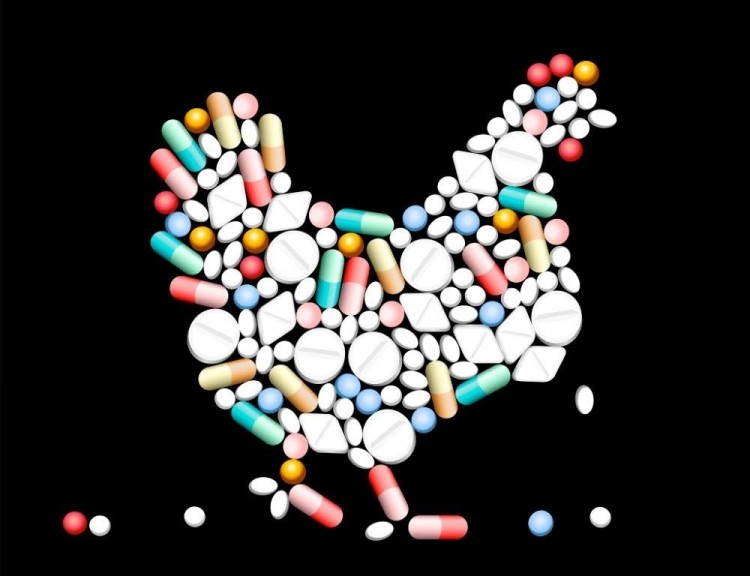
The BPC is the first livestock trade group to set up a data collection mechanism to record antibiotic usage in its segment. Its report, released last month, showed its member cut back on overall antibiotic use by 44% since 2012 along with drugs critical to human health.
“This is pioneering work by the BPC and puts pressure on the rest of the livestock industry to do likewise, it is definitely a trend in the right direction in terms of transparency and sector responsibility in the use of antibiotics,” Richard Murphy, director of research at Alltech European Bioscience Center in Ireland, told us.
The BPC’s report also noted the efforts made by its members to reduce the prophylactic use of those drugs where no disease has been identified, with the Council urging more research into new antibiotics as well as alternative effective therapeutic options.
Industry at a crossroads
Talking more generally, Murphy said the European livestock industry really is "at a crossroads" in relation to antibiotic practices.
He said there is little doubt now that overuse and misuse of such drugs on farms contributes to the spread of antibiotic resistance.
“To a large extent the damage has already been done. We can see an environmental effect in certain animals that have not been exposed to medicated feed and yet have antibiotic resistance genes that have been passed down from grandparent stock fed the drugs.
"Of course, we can move to limit that resistance now, work to ensure we don’t increase it.
Resistance to widely used antimicrobials, such as ciprofloxacin, was commonly detected in bacteria in poultry, found a recently published EU report on antimicrobial resistance in zoonotic bacteria.
The analysis, published by the European Food Safety Authority (EFSA) and the European Centre for Disease Prevention and Control (ECDC), said data submitted by EU countries for 2014, shows antimicrobial resistance (AMR) poses a serious risk to human and animal health, with bacteria in humans, food and animals continuing to show resistance to such drugs.
The monitoring of AMR bacteria from animals and food focused on broilers, laying hens and fattening turkey, said EFSA.
"I believe societal pressure can help accelerate a reduction in antibiotic usage. But I don’t’think there is enough awareness among consumers about the extent of antimicrobial resistance in farmed animals.
“Perhaps, the UK’s Food Standards Agency (FSA), which recently announced it had to suspend its survey on campylobacter due to chicken skin removal by some processors leading to monitoring inconsistencies, should instead screen for resistance to that bacteria in poultry,” argued Murphy.
While noting the success of Denmark and the Netherlands in terms of a shift away from the prophylactic use of antibiotics in farming, he acknowledged the challenges involved in addressing any changes to livestock production across 27 countries. “There is a lack of data and no one unifying view on antibiotic use.”
Ban on prophylactic treatment
Murphy does not foresee a cross-sector wide reduction in antibiotic use in farming in the EU 27 until a ban on routine use comes in: “It would be a paradigm shift but one that has been already proposed by the Commission.”
He reckons such a prohibition won’t be in play this side of 2020 but could come in one or two years thereafter. “But there are many legislative hurdles to overcome in the interim.”
As it stands though, he said many EU livestock producers are not prepared for a ban.
“Farmers are concerned about how to incorporate the higher costs involved. We saw a hike of €0.91 cents per pig after the AGP ban in the EU in 2006 and we would expect an even bigger impact on production outlays from an end to prophylactic use given the need to switch to less cost effective, varied raw materials in the new model.
“And questions have also been raised as to how EU livestock producers would fare under such a regime when exposed to competition from imports from countries not under such constraints as we are never going to see a worldwide ban.
“They might just have to ride it out and be less competitive in the short term.”
Murphy reckons the broiler sector would have an easier time of it than the swine industry, given the short growth cycle for chickens. “I would expect to see massive consolidation in the EU pig sector as the smaller producers would certainly find it challenging to stay profitable if a ban on preventative use of antibiotics is implemented."
'One size fits all' approach deemed unworkable in the EU
David Burch, a UK based veterinarian, animal health consultant, speaking to this publication last year, said while there is huge political pressure to migrate away from the use of antibiotics in EU pig farming, a glut of endemic diseases in certain markets and a lack of a competitive playing field across the bloc means it is not realistic to expect a ‘one size fits all’ approach to implementation of regulation on lower antibiotic usage.
Any EU antibiotic reduction Bill would have to take account of where each market is at and the different approaches to medicated feed delivery in each country, he said.
“The UK pig industry had been in the doldrums for years. We have only recently begun to feel, as a sector, that we can compete with the Danish and Dutch systems. And compared to those markets, there has been a significant lack of investment in housing and infrastructure," continued Burch.
He also disagreed then with some aspects of EC regulatory proposals on ways to reduce antibiotic usage in livestock production. “It has been suggested that animals should not be treated with antibiotics before there are clinical signs of illness but it is extremely hard to treat an animal once it is sick. It is far easier to prevent the disease occurring in the first place.”
He said much work still needs to be done to ensure any measure to reduce antibiotics in pig production across Europe must be practical and must be applicable at farm level:
“It is feasible for corporate style farming operations, incorporating up to ten farms, to integrate antibiotic reduction drives but for individual farmers, it is much more difficult because of the loss of income for six months."
Beneficial microflora
Murphy has long been investigating alternative nutritional practices to support a migration away from antibiotic use:
“There have been some success with the use of rotational nutrition programs that involve the use of competitive exclusive approaches, for example, or pre and probiotics, or organic acids and essential oils in terms of reducing the dependency on antibiotics in livestock production.
Our ‘seed, weed and feed’ method aims at improving bird health by developing and nurturing beneficial intestinal flora and, thereby, reducing the dependency on antibiotics.”
The industry is increasingly realizing that it is all about ensuring diversity in the gut microbiota of the animals, he said.
“We have also been looking at how different nutritional compounds in the diet including yeast cell wall derivatives can support broiler gut health by rebalancing the microflora and preventing pathogen adhesion.”
And he said his team is also trying to gain greater understanding of the role of nutrients in increasing the effectiveness of antibiotics in order to either reduce or eliminate such dependency completely.
